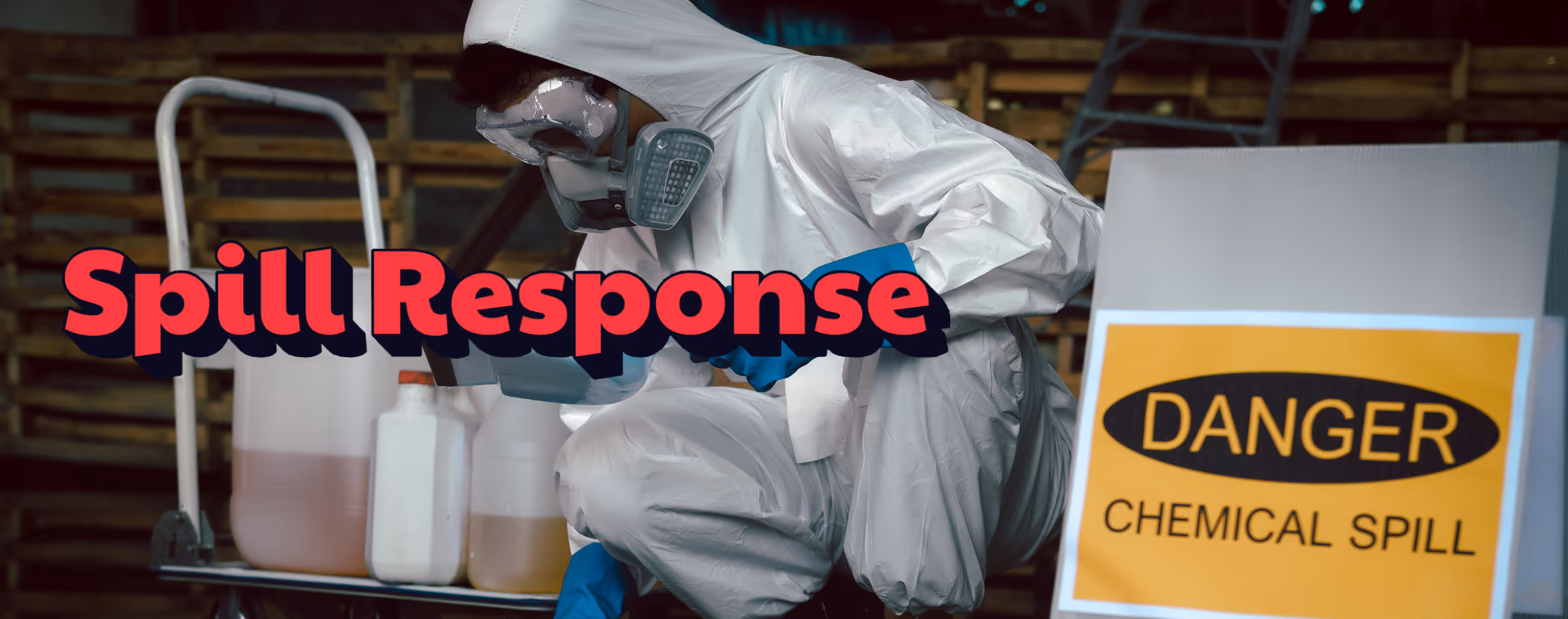[rifft_cart_progress]
Your cart and quote enquiry are empty.
Click here to start browsing our collection.
Click here to start browsing our collection.
Equip your facility with our full spectrum of Spill Response equipment to contain, control and clean up leaks fast. From compact bench-top kits to industrial booms, we keep you compliant with Worksafe NZ and HSNO regulations—whatever liquids you handle. Browse our product subcategories below!
Read more…
Accidents happen in warehouses, workshops, laboratories and on remote sites. When they do, every second counts. Our spill response range is designed for speed and simplicity:
Every item in our catalogue is tested for Kiwi conditions—UV-resistant outer bags, tough polyethylene bins and high-capacity sorbents that will not fall apart when saturated. Whether you are mopping up a 5-litre solvent splash or a 1,000-litre diesel loss, we have a kit that scales to your risk profile.
Nationwide NZ delivery means you can restock fast, from Kaitaia to Invercargill. Need a customised spill plan? Contact our friendly team for tailored advice and bulk pricing.
Stay audit-ready—choose Rifft Safety for spill response done right.
Read less

Be ready for any spill with our NZ-compliant Spill Response Kits. Pre-packed, colour-coded kits that combine absorbents, PPE and disposal bags for rapid spill containment. Select universal, chemical, hydrocarbon or laboratory variants depending on your site.
Loose granules, socks, pads, rolls and pillows engineered to lock in oils, fuels, coolants and aggressive chemicals. High-capacity, low-lint sorbents keep floors dry and workers safe during routine maintenance or major incidents.
PPE, disposal bags, warning signs, and clean-up tools to keep spill kits up to date efficient.
Prevent spills from contaminating waterways with our reusable drain covers, sediment filters and inlet mats seal storm-water entries in seconds, preventing hazardous run-off from reaching New Zealand’s waterways. Ideal for loading bays, car parks and construction sites.
Quickly ring-fence spills on land or water with heavy-duty booms that surround oil and chemical spills. Flexible PVC or poly-sock designs create an instant barrier, protecting sensitive environments while recovery teams mobilise, preventing spread and environmental damage.
Be the first to hear about the latest products and industry insight
Under the regulations, a PCBU must ensure that every worker who uses, handles, manufactures, or stores a hazardous substance (including hazardous waste) is trained before carrying out or supervising work involving those substances.
This training is provided through public face-to-face courses, onsite courses (minimum numbers apply), or as an online self-paced eLearning course.
Spills in your workplace must be managed and cleaned up safely. The knowledge to do so is important for warehouse staff, drivers, loaders, managers and other people who work with or store chemicals.
This course provides you with training and instruction on how to deal with small and medium-sized spills. Available as a 50 minute onsite course or online training completed at your own pace.
This training forms the theoretical component of the Approved Filler Certification process. After completing the course you will be issued a certificate that can be used to prove your theoretical knowledge on Approved Fillers.
Please note we do not issue or sign Certificates. Only WorkSafe Approved Compliance Certifiers can do so.
This training forms the theoretical component of the Certified Handler Certification process. After completing the course you will be issued a certificate that can be used to prove your theoretical knowledge on Certified Handlers.
Please note we do not issue or sign Certificates. Only WorkSafe Approved Compliance Certifiers can do so.
This course is for anyone who handles or transports any dangerous goods, e.g. fuel and chemicals, by road in New Zealand and needs a D Endorsement. To get the endorsement, you need to complete this course and take your course certificate provided by IVS Training to a licensing agent (VTNZ, AA).
The endorsement expires every 5 years and you must re-sit an assessment and have it endorsed on your license
Dangerous goods have special transport requirements to eliminate or minimise the risk of injuring people or damaging property and the environment.
If you manufacture, pack, consign, or transport dangerous goods, it is crucial to understand these requirements. This is especially important in New Zealand, where many goods need to travel by multiple modes of transport, such as land transport combined with either air or sea transport when moving between the North and South Islands.
Stay prepared for emergencies with our First Aid training courses. From core essentials to refreshers, these courses will cover everything from minor injuries to life-threatening emergencies, ensuring you can provide effective aid until help arrives.
Update your first aid knowledge and skills, keeping you current with the latest guidelines and practices.
Respiratory protective equipment (RPE) is a type of personal protective equipment (PPE) that protects people from breathing in substances hazardous to health.
This test is crucial because a proper fit is necessary to minimize the risk of inhaling hazardous substances, such as dust, gases, vapours, or particles, that may be present in the work environment fits appropriately and is fit for purpose.
Site plans help identify and mitigate the risks associated with the hazardous substances you have on site to ensure the safety of workers, the environment, and the surrounding community.
The requirements for a compliant site plan are documented in accordance with the Compliance Certifier in reference to AS/NZS 60079.10.1:2009, Health and Safety at Work (Hazardous Substances) Regulations 2017.
Traffic Management Plans are designed to ensure the smooth flow of vehicle and pedestrian movements onsite, effectively managing traffic risks and minimising vehicle-related accidents.
These plans clearly define the roles and responsibilities of traffic managers and drivers, as well as daily and emergency traffic control procedures.
Entrust us with a thorough evaluation of your spill kits and emergency showers. One of our specialists will conduct an on-site inspection to assess the condition and compliance of your equipment.